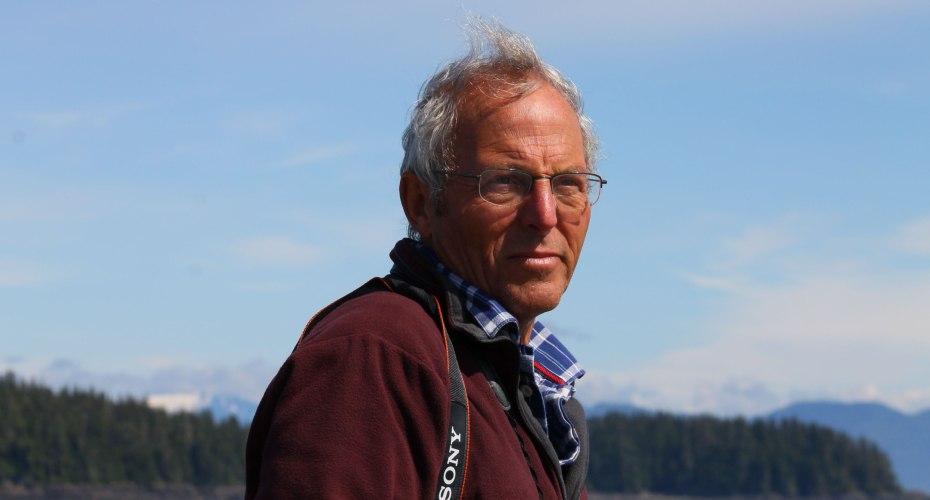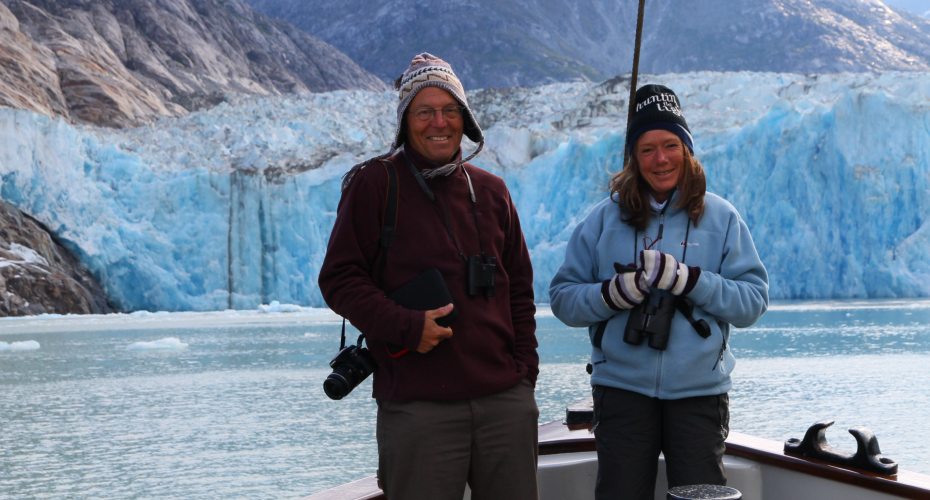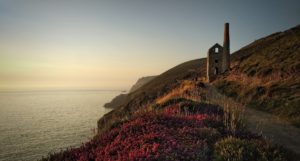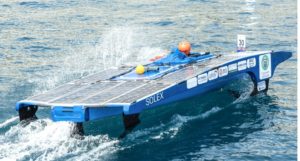Penryn Perspectives: Chris Caseldine, Emeritus Professor

“When I reflect upon my time in Cornwall, well, it was just fantastic.”
Chris Caseldine
Chris Caseldine is an Emeritus Professor of Geography and served as both Head of Department and Head of School during his 40-year career at Exeter. A graduate of the University of St Andrews, Chris joined Exeter in 1976, and oversaw the expansion of Geography to the Penryn campus when it opened. He played a key role in establishing the facilities in the Daphne Du Maurier Building and eventually moved to the campus in 2006 staying there until his retirement at the end of 2015.
In this latest Penryn Perspective, Chris explains how he helped to lay the foundations of the academic community, and how a B ‘n’ B became his home-from-home for the best part of a decade.
“When I first visited the Penryn campus, it was mainly just foundations. And that was symbolic of the task ahead because we were effectively being dropped in to establish new degree programmes across different disciplines. Before the campus was established, the Heads of School involved met to formulate the business plan and discuss the space and facilities we each needed.
“I remember on one occasion meeting with the architects – this would have been not long after the plans had been featured in the media – and we were studying this very impressive artist’s design of the Daphne Du Maurier Building. Among the little details were people lounging on the roof and having picnics and barbecues. And as we gathered round and looked at it, we had to point out to the architects that those people were right next to the extraction units from the labs, which mean they’d have been eating their sandwiches while breathing in some very unpleasant gases! To this day, that roof looks the same – but people have never eaten their lunch there!
“A huge amount of thought and discussion also went into the establishment of the degrees themselves. We launched programmes such as Geography and Earth Systems Science, and Geography and Environmental Management – which were intentionally different to those taught on Streatham, and at Plymouth, because we were not allowed to compete for the same students.
“Once we were up and running, the courses worked well. Initially, it seemed the simplest approach was to replicate what we did in Exeter, and it was a great selling point that we were sending lecturers back and forth between the two campuses and using video links to join classes. That way, we could be more efficient with staff time and offer a broader choice of options.
“There were, however, very few rooms that could accommodate that, and it put huge pressure on the timetable. As an example, I taught a popular third year module from a seminar room in Daphne Du Maurier. During these lectures I effectively couldn’t move from my chair for two hours because I had to the stay within camera-shot so that the 20 or so students sitting in a 400-person lecture theatre in Exeter could see me! And if someone put a spade through the line – as once happened – then that was the end of teaching! So, it was a strange and challenging exercise to begin with, and eventually we scaled back on the number of courses to improve the experience for the students.
“Over the final ten years of my career, I was a full-time staff member at Penryn, though I remained living in Devon for family reasons and to liaise with the Streatham campus. I would commute down for two or three days each week, staying in the same B&B in Mawnan Smith. It became my home-from-home. And it was a very enjoyable way to finish an academic career because in some senses, it was like going back to the early days.
“For those of us who had taught in Exeter, with its increasing numbers due to the degree’s huge popularity, it was lovely to experience the smaller classes of Cornwall, and to be better able to build a close relationship with students. And we did, at least initially, attract a different and more diverse cohort, both those who wanted to be by the sea, and more mature undergraduates from within Cornwall, who were clearly taking advantage of an opportunity that had historically never been there. And whether it was those smaller classes or not, I always felt that our students really responded to the teaching and were imbued with greater confidence.
“Despite the various foibles and idiosyncrasies we encountered over the early years – not to mention the colour scheme of the office furniture in the Peter Lanyon Building when we moved there – the story of Geography in Cornwall has been a successful one. Now with the expansion into Environmental Science, and the proximity to the Environment and Sustainability Institute, I think students have a better understanding of the difference between the two locations in terms of what they offer.
“Though I retired in 2016, I still do a little teaching on field trips, along with my wife, and it’s nice to remain involved, 20 years on from those first foundations. And when you consider the development of the ESI and all the new buildings that have been opened since, over a relatively short period of time, well, it is just astonishing.”




